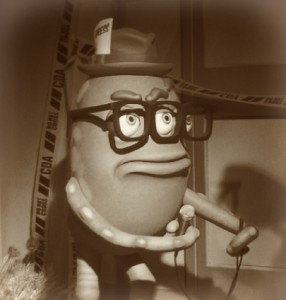
How do you obtain your daily serving of news? Do you set aside time each day to read printed newspapers or magazines or watch TV news broadcasts? If your answer is “not really,” then we have a lot in common.
I’m Prof. Marie K. Shanahan and for the next few months I’ll be your guide as we dive deep into the emerging field known as “digital journalism.”
My daily news diet consists of headlines from Twitter, Facebook, RSS feeds programmed into Feedly, email newsletters, and my own Google searches. My news comes from many different sources: reputable news organizations, individual journalists, blogs, family and friends. My iPhone, my iPad and my MacBook deliver a steady stream of information to me on ever-changing screens.
I still harbor a great love for the written word. I pay for print versions of a half dozen magazines and the Sunday Hartford Courant, but I find myself reaching for them less and less. Web search and social media overwhelm me with limitless, personalized discovery and up-to-the-second news updates. I’ve yet to pay for news online, but it’s coming to that. Since I spend a lot of time driving in my car (and driving and texting is extremely dangerous) I’m also a dedicated listener of National and Connecticut Public Radio. I rarely watch TV news.
The point is: News can now be delivered in countless ways. If people are using any piece of software or hardware to communicate, journalism can happen on that channel. Can you think of a way to provide news on Vine or Instagram? How about Snapchat?
How Is Prof. Shanahan Qualified To Teach This Stuff?

For 17 years, I worked in the field as a professional journalist, with a dozen of those years as an online journalist. I’ve spent countless hours on my laptop computer(s) and mobile phone(s), most recently as a Connecticut regional editor for Patch.com and before that as the deputy online editor of The Hartford Courant.
During the first five years of my professional career I worked as a print newspaper reporter at The Courant. My favorite stories to write involved profiles of interesting people. My least favorite stories to write were about crime, especially when the victims were children.
Never was I expected to take photographs or shoot video with my stories, although occasionally I’d record an interview with this piece of technology.
When I voluntarily joined the newspaper’s online staff, my print journalism peers reacted to my career choice with disapproval. Why in the world would I want to sit in front of a computer all day and mess with HTML code and Photoshop? Most of my print journalism colleagues turned up their noses at the web as a place to deliver journalism and treated me like a pariah. The Internet, at the time, was clunky and obscure, and it was giving away the news for free. Online journalism, they told me, was a bad career move.
They were wrong.
Technology changed the game.

To remain relevant, journalists must adapt and operate as part of this modern communication “network” — creatively telling and distributing stories, investigating and evaluating “truth” and “truthiness,” acting as guides and curators of information, joining and building communities, and engaging in “conversations.” We need to figure out how to pay for the good work of professional journalists in a sustainable way. Digital journalism is both exhausting and exhilarating. It offers something new and unexpected everyday.
Fall 2011 marked my full-time return to UConn as an assistant journalism professor. I previously taught digital journalism as an adjunct professor at Quinnipiac University, the same institution where I earned my masters degree in Interactive Communications. I’ve also had the pleasure to serve as a regional judge for the prestigious Livingston Awards for Young Journalists and the Society of Professional Journalists’ Sigma Delta Chi Awards, which I hope you will all attempt to win someday.
You can find me on:
Twitter: @mariekshan
LinkedIn: www.linkedin.com/in/mariekshan
Facebook: facebook.com/mariekshan
Google+: plus.google.com/u/0/105409763229487457994/about
MuckRack: muckrack.com/mariekshan
And, occasionally, in my office: OAK461.